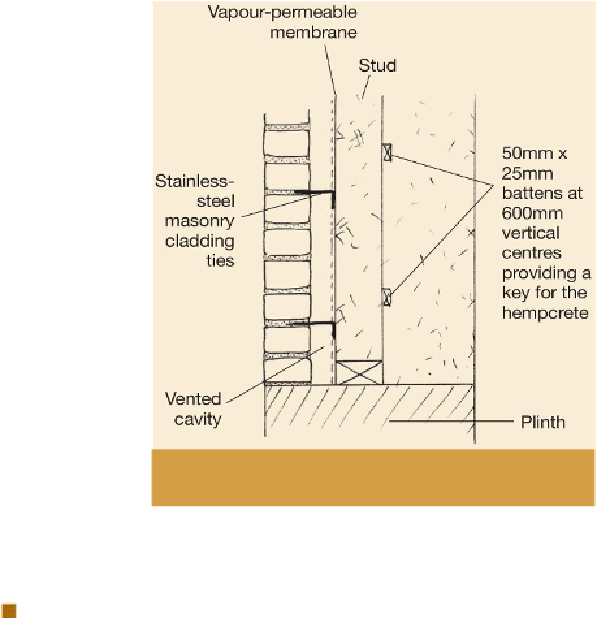Civil Engineering Reference
In-Depth Information
tial that it is sufficiently wide and well vented, and does not get filled with dropped mortar.
As many vents as possible should be provided at the base and top of the cladding.
Figure 35.
Protecting frame timbers and ensuring airtight-
ness if using masonry cladding.
It is recommended that a lime-based mortar be used for masonry cladding, even
with
a
vented air gap, as this has several advantages:
This is a more robust detail in terms of breathability: a lime mortar helps to keep the
masonry cladding permeable to vapour, which improves the overall breathability of the
building, and allows any moisture in the cavity to exit through the cladding as well as
through the vents.
Lime mortar is more flexible and better equipped to absorb the slight movements that
occur in timber-frame buildings.
It is a more environmentally sustainable option.
It will be more in keeping with the overall design and finish of the building.
It will allow the use of softer stones and brick without causing damage to them.





Search WWH ::

Custom Search